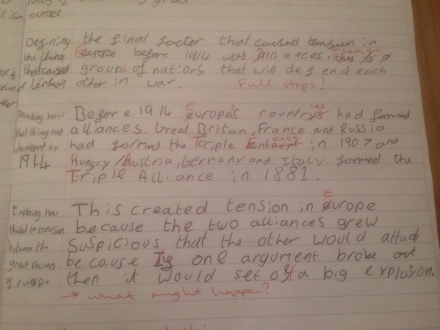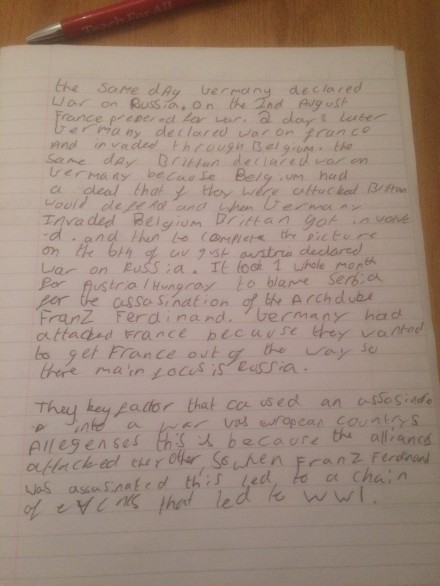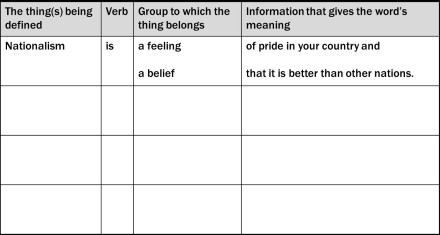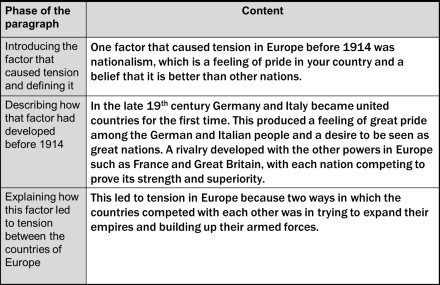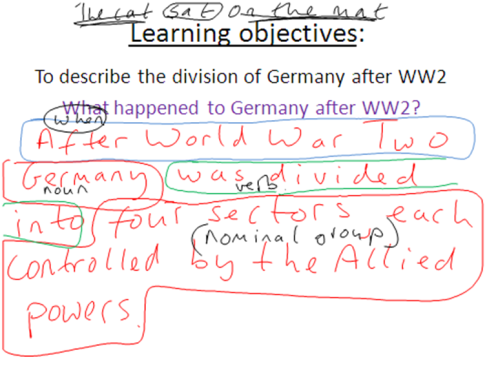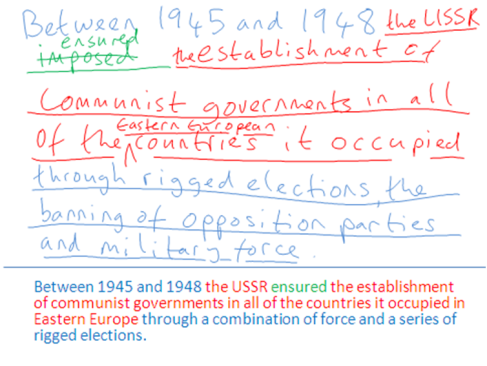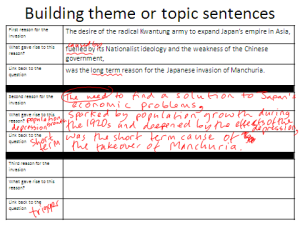***Writing this after having written the entire post – I’m unsure if much of the below is of interest to anybody. My aim is to chronicle what I think is quite a different way of planning and delivering a scheme of work by simply describing what I do in each lesson. There are definitely parts that are interesting, but I would welcome feedback from anybody reading on whether I am going into too much detail and if I need to choose edited highlight of lessons, pulling out key points.***
I aimed to post before I delivered any lessons in this unit, outlining what I planned to cover in the first three lessons. However, I think this was unrealistically optimistic given the way I have to plan my lessons, which is a bit last minute. Also, it’s still amazing to me that in my tenth year of teaching I can plan what I think will take a lesson and it actually takes two or three. Ho hum. In that case I think I’ll stick to posting at the end of each week a summary of my three lessons with the class.
This is a long one, so good luck. But I hope it illustrates the amount of thought and planning that goes into these things…
To re-cap on what I am aiming to do over the course of this unit of work: I want to deliver the key content the pupils need for the USA 1945-75 section of OCR B History Paper 1, but I also want to explicitly teach them how to produce specific historical genres of writing, linked to the typical exam question they will face. The first key question we are working towards is Explain why there was a ‘Red Scare’ in the USA, which is a factorial explanation.
The specified content pupils need to answer this question successfully is as follows:
How did the international situation make Americans more fearful of communism?
- Soviet expansion in Eastern Europe, inc. The Berlin Blockade;
- Russia’s acquisition of the atomic bomb;
- The spread of communism in Asia, inc. Invasion by North Korea of South Korea & the Communist victory in China.
What was McCarthyism?
- The 1947 Federal Employee Loyalty Program;
- McCarthy’s speech in February 1950,
- The work of the House Un-American Activities Committee;
- The work of the FBI and Hoover,
- The use of Blacklists;
- The 1954 Communist Control Act.
Why did people support McCarthyism?
- Fear of Soviet spies: Alger Hiss, the Rosenbergs;
- Suspicion of liberal ideas.
Why did McCarthyism decline?
- Opposition to McCarthyism by actors and intellectuals;
- Court decisions against McCarthy;
- Excesses of McCarthy;
- The Army-McCarthy hearings.
I began by thinking about the knowledge pupils needed before they even got near to covering this content. There is a lot needed and my pupils generally lack good general knowledge – as inner city kids who live in deprived areas unfortunately tend to. This, of course, is the singular argument against the idea that we don’t need to prioritise knowledge acquisition any more (more ably argued against than I could by Daisy Christodoulou, Joe Kirby and others elsewhere, but I digress). The challenge therefore was to identify as sharply as possible the background knowledge my pupils need in this context in order to enable them to access the specification content at a level that will enable them to explain how the events and developments they learn about contributed to the anti-Communist witch-hunt in the USA. This would inevitably necessitate a compromise between knowledge and time.
I decided that we needed to begin by briefly defining the ‘Red Scare’ (before we cover the actual events of it later). In addition I wanted to get pupils to the point where they knew the major theatres and combatants of World War Two, given that the Cold War (the ‘international situation’ referred to above) developed in both Europe and Asia immediately after this, and also thought pupils should see maps of post-war Europe and South East Asia to illustrate the position at the end of the war. Finally, and most problematically, they needed to understand the key features of Capitalism and Communism as sets of ideas on how the economy should be run, plus how those two sets of ideas influenced the political systems of the USA and USSR (I wanted to avoid the simplistic formula that Capitalism = democracy and Communism = totalitarianism, but wanted them to understand that the political differences between the USA and USSR played a large part in the fear of Communism felt in the former).
(By the way that was only the bare minimum of knowledge I thought I could get away with to start on the first of those sub questions above ‘How did the international situation make Americans more fearful of communism?’, which is essentially the first factor for our factorial explanation.)
Lesson 1:
Therefore my original objectives for my first lesson (woefully ambitious in terms of time!) were:
- To define ‘Red Scare’.
- To learn the major theatres and combatants of World War Two.
- To identify the key features of Capitalism and Communism
In the event, we got through the first two, as follows…
Step 1: Beginning with the end
Firstly I introduced pupils to the genre of writing we were aiming to produce (they already had a copy of the specification content from before half term). We re-capped the schematic structure of the factorial explanation:
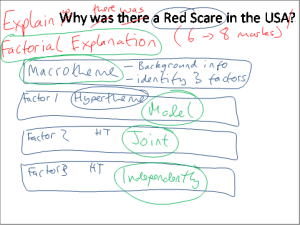
We have written these before and the class knows this is the genre they have to produce for the 6 and 8 mark questions in their exam. However, their recent assessment results show that there is a world of difference between them knowing that and producing it under pressure in an exam situation. Almost all of them structured their 6 and 8 mark answers with a brief macrotheme (introduction) and three separate paragraphs, one for each factor they were discussing – they know how to structure at the whole text level. However, it was clear that they do not yet have mastery of how to structure their writing at paragraph level. They are able to write good macrothemes (introductions) – a first sentence that defines any key terms in the question and sets those in historical context if necessary (where, when, who) and a further sentence that directly answers the question by identifying the three factors they will discuss in the rest of their answer. But in a lot of cases their following three paragraphs are, to be frank, a mess. They are still throwing down on the page all of the knowledge they have without thinking carefully enough about how to structure it to make the meaning they need to to explain how that factor helped to cause the event or development the question identifies.
Therefore I went over with them again how I will use the teaching and learning cycle (see blog 3 here) to lead them to being able to independently produce a paragraph in a factorial explanation:
- Firstly I will set the context (that background knowledge I mentioned above) and build the field for the first paragraph – that is teach them the content the specification requires.
- From there I will model for them an effective paragraph explaining the first factor and deconstruct it – explicitly showing them how I produced it and how its phases are constructed demonstrating, as I said in my previous post, how to go beyond the simplistic P-E-E formula to write paragraphs that suit a factorial explanation (I may have to write a separate post about the limitations of P-E-E).
- Next I will build the field for the second paragraph (second factor – fear of Soviet spies in the USA)
- We will then jointly construct a second paragraph on this factor. This will involve the exact structure and wording of the paragraph being negotiated with the pupils; they will draw on the modelling and deconstruction we did for the previous paragraph and I will guide the process to the required result: an effective paragraph.
- I will then build the field for the third paragraph (third factor – suspicion of liberal ideas in the US).
- Lastly, the pupils will draw on this knowledge, plus their knowledge of how to structure an effective paragraph, to independently construct the final paragraph.
(At this point we will also double back to the start of the question and write a macrotheme, drawing on everything we have learnt.)
Step 2: defining the Red Scare
To meet the first objective of ‘define the Red Scare’ I gave pupils this contemporary source and asked them two questions:
1. What can you see?
2. What does this source suggest about attitudes towards Communism in the USA in 1947?

This enabled them to see a real piece of anti-Communist propaganda and they were able to produce responses to the second question along the lines indicated by my squiggles on the slide – they understood that there was fear of Communism because it was perceived as a threat to the American people.
(At this point I had anticipated a question along the lines of ‘why red’? and so had up my sleeve a slide that showed a range of Communist flags as well as images showing that red is the colour of the Left more broadly.)
We were now able to move on to nailing down a definition of the ‘Red Scare’. I used a four-part formula shared by the wonderful Helen Handford (mentioned in a previous blog of mine here as the person who has supported my implementation of genre pedagogy through co-planning and coaching).
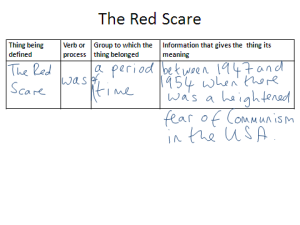
Some pupils were familiar with this formula from Biology lessons with my colleague Ms Mackie but I tweaked it to point out that as we were discussing an event or period of time in the past the verb (or process) had to be in the past tense.
At this point I also realised that I had not addressed the fact that the Red Scare was not just a period of fear of Communism but it was a period of increased fear – the fear had been there before and during the war, but it increased to a frenzy afterwards. I explained this to the class and we therefore included the word ‘heightened’ in the definition and I made a mental note to revisit this when we look at the events of the scare itself.
Step 3: World War Two becomes Cold War
To meet the second objective of ‘learn the major theatres and combatants of World War Two’ I kept things pretty simple. I showed the class maps of Europe and Asia and identified the principal combatants in each theatre, telling them they had to learn these and I would check on their recall of them over the next few lessons. I then showed two animated slideshows/guides to the major events of the war in each theatre (http://www.youtube.com/watch?v=Da5axIR_yHw and http://www.youtube.com/watch?v=J36IQmVriw8), finishing by talking them through maps of the two theatres at the end of the war, showing them how Europe was left divided between Capitalism and Communism West/East, Korea was divided North/South and China was left in the throes of a Capitalist vs Communist civil war. I then explained that a ‘Cold War’ developed between the chief proponents of the two ideologies (USA & USSR/China) using this slide:

We then moved on to defining the Cold War to give us a basis for the next lesson, so I gave the pupils a couple of minutes to use the four part formula to discuss their own definitions and we jointly constructed the following with me adding the dates (the class were surprised when I told them I had already been born in 1991 when the Cold War ended*):
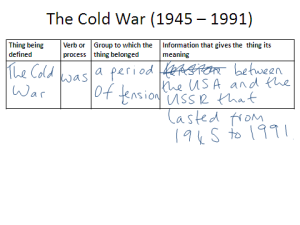
*they weren’t.
Lesson 1 over!
Lesson 2:
Having concluded lesson 1 by outlining the situation between Capitalism and Communism in Europe and Asia in 1945 and touching on the fact that a Cold War developed we now had to turn to the next objective:
- To identify the key features of Capitalism and Communism.
I confess to really struggling with how deeply to delve into this. I had to think very carefully about giving the class sufficient understanding of the differences between them and the tensions this created whilst not getting bogged down in too much detail and spending too much time on it. So before I launch into it a disclaimer: I’m sorry if you think my treatment of the two ideologies is shallow, inadequate, misguided, hopelessly simplistic.
I meant to start the lesson with a ‘Do Now’ activity (a la Lemov) which would have recapped the definition of the Red Scare and tested the pupils’ recall of the theatres and combatants of World War Two. In the event I forgot to print the damn thing off so I just cold-called pupils (another Lemov reference) to give me the definition using the correct 4 part formula and then to recall the details of World War Two – each time insisting on pupils answering in full sentences (Format Matters – Lemov again and now departmental policy) and employing ‘No Opt Out’ (Lemov, ‘natch), which meant that if a pupil was unable to recall one of the combatants or theatres I either broke the question down by asking simpler questions (Break It Down, Lemov) that scaffolded them to the answer or I came back to them after other pupils had correctly answered the questions and insisted they repeat the answer.
I moved on from the re-cap by looking at the words Capitalism and Communism themselves and pulling them apart, firstly explaining that an ‘ism’ denotes a set of beliefs. I then explained that ‘capital’ refers to money, specifically money used to invest in a business, and that this relates to how the economy runs. I also explained that they should think of ‘commun’ as referring to something like ‘communal’ – i.e. things should be shared among the population and again that this relates to how the economy is run.
I used the following slide to now outline the key features of the two systems, explaining that both are essentially economic systems and that the political systems below them were the typical ones associated with each, but not always (pointing to examples that contradict the model below, like China or capitalist dictatorships). NB: I’m well aware that the information on wealth in Communism is crude and simplistic!

Finally, reflecting on a recent comment by Daisy Christodoulou on explicit vocabulary instruction (can’t remember where I read it, sorry), I picked on several of the words highlighted in red and explained their roots and meanings, as this slide shows:

This prepared us to begin the next lesson by using the 4 part formula for definitions to write good ones for the two terms.
Lesson 3:
This lesson was observed by our Principal and Vice Principal for performance management purposes.
I felt the class now had sufficient background knowledge for us to move to writing a high quality hypertheme (topic sentence) for the first paragraph of the factorial explanation. As I stated above my intention was to model this and then deconstruct it in order to make explicit the process of how I had come up with it and the way it structured historical knowledge through language.
The two objectives, therefore, were:
- To define Capitalism and Communism.
- To identify the first cause of the ‘Red Scare’.
What I hope becomes clear through my account of this lesson is two things. Firstly, the importance of something David Didau has blogged about tonight here and Joe Kirby has blogged about today here, which is of not rushing to scale Blooms’ Taxonomy without ensuring pupils have sufficient knowledge. If I’d seen learning objectives like those above in a lesson I was observing 18 months ago my first comment on the observation form would have been ‘objectives not challenging enough’ because I would have considered ‘define’ and ‘identify’ to be low order ‘skills’. As you will see, they certainly aren’t, they are chock full of bits of knowledge. Secondly, identifying a cause of an event in history can be done really badly and briefly, or really well and slowly – focusing on the language of how we express those causes is absolutely central to making pupils good at history.
I used the ‘Do Now’ sheet I had forgotten to print out the day before as a settler – this obviously re-capped the same content as the previous day’s lesson had, but I judged that revisiting the definition of ‘Red Scare’ and the theatres and combatants of World War Two was valuable and doing so would allow me to pick on pupils that had been unsure the day before when we had first re-capped this knowledge.
We then moved on to defining Capitalism and Communism. We quickly re-capped the meanings of the parts of the terms – ‘ism’, ‘capital’ and ‘commun’ and the features of the respective economic systems. Having used the 4 part formula several times now I judged that we would be able to jointly construct the first definition by asking pupils to discuss it in pairs, with me taking suggestions to put on the board. I still made sure to deconstruct what was offered by the pupils by pointing out the structure and discussing the two key parts of the definition: the ‘group to which the thing belongs to’, which the pupils decided was ‘a set of beliefs’; ‘the information which gives the thing its meaning’, which had two elements, who owned businesses and what happened to wealth. Here is what they came up with:
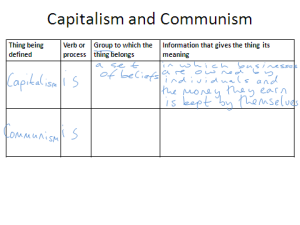
I then asked pupils to independently construct a definition for Communism on their own following the same pattern. Circulating as they did this, I was able to observe that most wrote something akin to ‘Communism is a set of beliefs in which businesses are owned by the government and wealth is shared’ – with one pupil adding that businesses were owned by the government on behalf of the people.
We now turned to bringing all of this preparatory work to the task of building our sentence identifying the first cause of the ‘Red Scare’. I wanted to scaffold the class towards the sentence:
‘The expansion of Communism and the emergence of the Cold War in Europe and Asia led to increased fear of Communism in the USA.’
The sentence is deceptively simple. It is a highly abstract and academic sentence that is structured as follows:

The red blocks indicate expanded nominal groups. This is a group of words around a noun that pack a lot of meaning into just a few words (‘the emergence of the Cold War in Europe and Asia’). The structure is essentially:
Nominal group + nominal group caused nominal group.
Or
Thing + thing caused thing
This is how historians write. Pupils at my school – EAL, high % FSM – generally struggle to use language in such a specialised way and so their ability to do so needs to be carefully scaffolded, as I’ll show here.
I gave pupils the following table:

This provided a way of building towards the kind of language we needed to create a really good hypertheme. We drew on the knowledge we had learnt over two and a half lessons to provide everyday answers to the 3 questions given, which we arrived at through questioning and discussion. I then asked pupils to nominalise the words I circled in red. They are well used to doing this and so were relatively easily able to move from ‘Communism was expanding’ to ‘The expansion of Communism’. Having this third column filled in enabled me to introduce the structure of the sentence as follows:
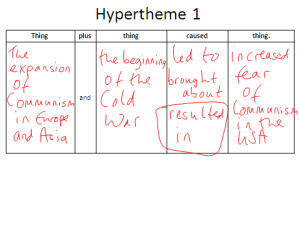
We firstly inserted our nominalised phrases into the relevant column – adding in the key details of where these things took place (‘in Europe and Asia’, ‘in the USA’). We then explored different ways to express ‘caused’, and I noted pupils’ suggestions. Thus we had arrived at a sentence very similar to the one I had written before the lesson and was aiming towards.
I was very happy with this end product – the lesson went exactly as I had planned it, which was great obviously during an observation.
That’s an awfully detailed account of my three lessons. Next week (paternity leave notwithstanding) I will go on to cover the early events of the Cold War as identified in the specification content. This will enable us to flesh out the paragraph for which we have spent a week building towards the topic sentence.

